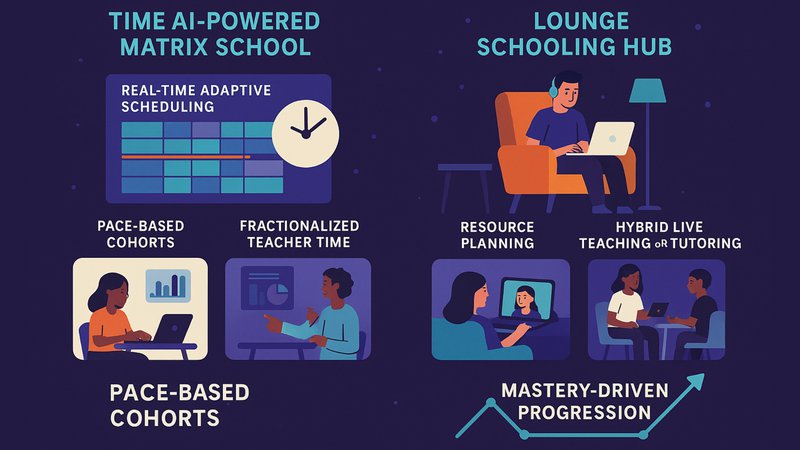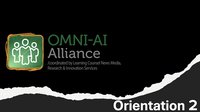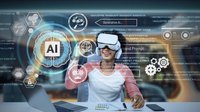The education sector is facing unprecedented pressures: widespread teacher shortages, declining academic performance, rising absenteeism, and school consolidations due to enrollment loss. In response, a proliferation of edtech companies has emerged—yet most have focused narrowly on point solutions. The shift is in both the schooling side and the edtech company side.
As the gravity of these systemic challenges intensifies, the market must move beyond fragmented offerings toward comprehensive, AI-powered architectures capable of reshaping the form and function of schooling.
Sticking with point-solutions hamstrings schools and districts into ongoing adoption cycles, supporting a plethora of individual resources (apps and systems), doing integrations for data sharing, enduring frequent releases and upgrades breaking fragile system-to-system cooperation and requiring new training – all at huge expense.
There are so many types of software in K12 schools for every subject, special needs student, and administration that the role of single-sign-on systems consolidating systems behind a single username and password are everywhere.
The whole of the construct is unsustainable.
What Everyone Wants
School leaders and teachers, edtech company executives, and the American consumer want many things that are unattainable within the current construct. They want a simpler system – and the market is about to dish out simplicity in spades.
The simplicity will be Omni-AI, a convergence of types of AI to become a central mind to schooling, making of the existing resources of both technology and people, whole new constructs.
The problem for both schools and edtech companies is that AI is going to change everything. Every, every, everything.
It will not be just at the teaching and learning level – it will be at the level of Amazon disrupting all retail, Fed-X running roughshod over other delivery services for years, Blockbuster’s rapid disappearance once Netflix came along, and how Uber all but eliminated taxis.
The difference will mean later generations will not even recognize what you are talking about when you describe today’s school systems. Bells ringing and all students dumping out enmasse into halls briefly? What? How chaotic! Zoning out in class because the usual suspects take up all the teacher’s time? Why are the groupings uneven? As a parent, having to pick an argument about the curriculum because its all the same for every student? Why isn’t it personalized? As a teacher, feeling stressed? Why did you tolerate so many roles and give up your humanity when you could just let AI do all the scheduling and personalizing?
Two of the most likely constructs are:
1. Omni-AI Matrix Schools, specifically powered by Time AI for all scheduling.
These institutions abandon traditional bell schedules and grade bands. Instead, students’ progress through subjects based on readiness after subject study for the next live-led class, supported by dynamic AI- generated cohorts. Teachers manage flexibly scheduled micro-sessions as the AI calendars each arriving cohort for each lesson anywhere on a course progression by selecting common time for the teacher and that particular cohort, all of whom are at the same point in study which brings relief from mixed-ability teaching. The Time AI difference is also physically different in the pattern of traffic and how the campus is used and remote or in-person teaching is used. With Omni-AI providing diagnostics across a multiplicity of systems as well as the pace of each student, it can guide students and teachers through varied instructional touchpoints in both digital and physical spaces. This model reclaims time, restores teacher agency, and individualizes the learner journey. Since instructional minutes remain the same whether a student is with the same teacher the whole time or doing their study parts in homerooms, and testing is according to grade-level in a course and not age, the legal requirements of this dramatic shift are met in all States reviewed.
2. Lounge Schooling Hubs for homeschooling-with-help.
Emerging as a response to parents with outside jobs and school consolidations making pick-up and drop- off a ridiculous complexity with multiple children, Lounge Schooling offers a new retail-style homeroom model. These supervised community spaces provide K12 students with a safe environment, learning connectivity, and wraparound services including personalized pathway planning, live virtual teaching, tutoring, and on-site testing. Blending education with convenience, these hubs extend access to structured learning for families needing alternatives. Expect such a development to encompass both public schooling efforts and the micro schools already growing swiftly in number nationwide.
Of important note is the fact that the progression to Omni-AI was predicted by AI itself. That’s right, ChatGPT indicated it is an inevitability due to the decay in the present schooling construct. It also isn’t just another feature; it’s a rethinking of how time, people, and digital content are orchestrated to maximize impact and sustainability.

Core Components of an Omni-AI Educational Architecture
- Generative AI Layer – going to work with educational agents for a wide variety of work-reducing tasks.
- Time AI Layer – Dynamically generating pace-based cohorting, auto-scheduling, and fractionalized teacher time management, syncing up with the Generative and Agentic layers.
- Integration of Point Solutions – Allows siloed tools to plug into a larger orchestration layer, unifying the fragmented tech ecosystem.
- Learning Object Navigation Layer – Connects standards, subjects, and learner profiles to intelligent sequencing of content, including those in siloed systems.
- Resource Management Layer – Allocates digital resources based on real-time data at point of need (not at removed bureaucratic points only), real-time assessments and feedback, real-time purchasing of needed licensing, real-time allocation of human resource, real-time financials and reporting of everything to human traffic and busing patterns, parent communication relays, and data mashing for recommendations of new actions.
The Campus-and-not-just-the-Classroom Reimagined: Technology as Infrastructure Architectural transformation extends to physical spaces and even across geographies:
- Hybrid-Ready Classrooms equipped with lecture-capture tracking cameras for asynchronous and remote learners.
- Interactive Whiteboards and audio-visual systems that allow real-time multi-location teaching.
- Teacher-Worn Microphones for auditory clarity in large or acoustically challenging rooms.
- Digital Time-Flight Boards (Signage) to keep students and staff aligned with dynamic scheduling.
- Integrated Surveillance and Network Management to ensure safety, connectivity, and insight into usage patterns.
- 3D printers, drones, robots, AR/VR, holographic tech, all have multiple use managed by Omni-AI.
Under the enormous pressure schools are in right now, they must mature in how they think about themselves as a body of professionals and how edtech could manage them into a more efficient and happy enterprise.
Marketers at the same time must evolve from a "best product wins" model to a "best system wins" reality. Point solutions are not inherently flawed—but when uncoordinated, they exacerbate workload and inefficiency. The future lies in the ideals forwarded by truly divergent thinking.
For both the edtech companies and schools the time for transformation is now—not just for innovation’s sake, but for survival.











